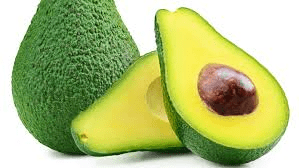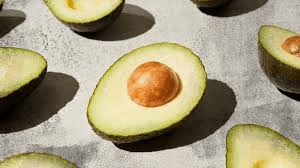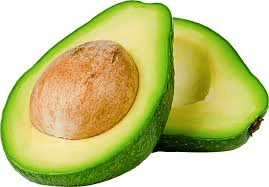Processing, packaging, and exporting avocados involves a series of careful steps to ensure the fruit arrives at its destination in optimal condition. Start by harvesting avocados when they are mature but still firm. Mature avocados should have a rough texture and be slightly softer when squeezed.
After harvesting, wash the avocados thoroughly with cool water to remove any dirt and residues. Next, sort the avocados by size and quality, discarding any that are damaged or overripe. To extend shelf life, pre-cool the avocados using a cold storage room or refrigerated truck. If ripening is needed, control the environment with specific temperature and humidity levels.
For packaging, choose sturdy, ventilated cartons that protect the avocados during shipping. Prepare the cartons by lining them with protective padding and ensure they are clean and dry. Pack the avocados carefully, placing them in a single layer or with dividers to avoid bruising.
Avoid overpacking to prevent crushing and leave space for ventilation. Seal the cartons securely with strong tape, label them with necessary details, and stack them properly to allow air circulation. Make sure to follow any specific packaging regulations set by the importing country and conduct a final inspection before transport.
When exporting avocados for profit, start with market research to identify demand and pricing in international markets. Ensure compliance with the target market’s import regulations and establish strong relationships with buyers, distributors, and logistics providers.
Negotiate favorable terms, optimize logistics to reduce costs, and set competitive prices based on research and production costs. Promote your avocados through various channels and monitor quality throughout the export process. Keep track of financials and collect feedback to continuously improve your product and service.
How to Process Avocados for Exportation

1. Harvesting: Pick avocados when they are mature but still firm. Mature avocados have a rough texture and should be slightly softer when gently squeezed.
2. Washing: Wash the avocados thoroughly to remove dirt and residues. Use clean, cool water and gently scrub each avocado.
3. Sorting: Sort avocados by size and quality. Discard any that are damaged or overripe.
4. Pre-Cooling: Pre-cool avocados to remove field heat and extend shelf life. Use a cold storage room or a refrigerated truck.
5. Ripening Control: If avocados need to be ripened, control the ripening environment. Store them in a controlled atmosphere with specific temperature and humidity levels.
6. Packing: Place avocados in cartons that provide cushioning and ventilation. Use protective materials to prevent bruising.
7. Inspection: Inspect avocados for quality after packing. Ensure they meet export standards and are free from defects.
8. Labeling: Label each carton with relevant information such as origin, variety, and packing date.
9. Documentation: Prepare all necessary export documents including phytosanitary certificates and customs paperwork.
10. Transport: Arrange for transport that maintains the required temperature and prevents damage. Use reliable logistics providers.
Read Also: Rabbits Killing and Processing Procedures
How to Package Avocados for Exportation

1. Choose Packaging Materials: Select sturdy, ventilated cartons that can protect avocados during shipping. Avoid materials that could cause bruising.
2. Prepare Cartons: Line cartons with protective padding if necessary. Ensure they are clean and dry.
3. Pack Carefully: Place avocados in the cartons in a single layer or with dividers to prevent them from bumping against each other.
4. Avoid Overpacking: Do not overpack cartons to prevent crushing. Leave space for ventilation.
5. Seal Cartons: Seal cartons securely with strong tape. Ensure there are no loose flaps or gaps.
6. Label Clearly: Affix labels on the outside of each carton with all necessary details including destination and handling instructions.
7. Stack Properly: Stack cartons in a way that allows for air circulation. Avoid heavy stacking to prevent damage.
8. Check Regulations: Follow any specific packaging requirements set by the importing country.
9. Conduct a Final Inspection: Ensure all cartons are packed correctly and are in good condition.
10. Prepare for Transport: Place cartons in a transport vehicle that maintains the appropriate temperature and handling conditions.
How to Export Avocados for Profits
1. Market Research: Research international markets to identify demand and pricing for avocados. Choose markets with high potential profit margins.
2. Compliance: Ensure your avocados meet the import regulations and quality standards of the target market.
3. Establish Relationships: Build relationships with buyers, distributors, and logistics providers in the target market.
4. Negotiate Contracts: Negotiate favorable terms with buyers, including pricing, payment terms, and delivery schedules.
5. Optimize Logistics: Use efficient logistics to reduce shipping costs and time. Ensure your transport maintains optimal conditions for avocados.
6. Pricing Strategy: Set competitive prices based on market research and cost of production. Consider factors like transportation and tariffs.
7. Promote Your Product: Market your avocados through various channels such as trade shows, online platforms, and local distributors.
8. Monitor Quality: Regularly monitor the quality of your avocados and address any issues that arise during the export process.
9. Financial Management: Keep track of expenses, revenue, and profits. Adjust your strategy as needed to maximize profitability.
10. Customer Feedback: Collect feedback from buyers and customers to improve your product and service continuously.
Read Also: Rabbits: Description, Damages Caused, Control and Preventive Measures
Frequently Asked Questions (FAQ’s) About Avocados

1. What is the best time to harvest avocados?
Harvest avocados when they are mature but still firm. They should be slightly soft when squeezed but not overripe.
2. How should avocados be stored before export?
Store avocados in a cool environment to maintain freshness. Use a refrigerated storage area to prevent them from ripening too quickly.
3. What are the key quality indicators for avocados?
Look for avocados with a firm texture, no dark spots, and a uniform color. They should not be overripe or damaged.
4. How can I ensure avocados stay fresh during shipping?
Use proper packaging materials, maintain the right temperature, and handle avocados gently to prevent bruising.
5. What documents are needed for exporting avocados?
Prepare a phytosanitary certificate, commercial invoice, packing list, and any other required customs documents.
6. How can I find buyers for my avocados?
Research potential markets, attend trade shows, and build relationships with international buyers and distributors.
7. What are common challenges in avocado exportation?
Challenges include meeting quality standards, managing shipping conditions, and complying with import regulations.
8. How can I reduce costs in avocado exportation?
Optimize logistics, negotiate better terms with suppliers, and streamline your export process to reduce costs.
9. What should I include in my avocado packaging?
Include protective padding, clear labels with necessary information, and ensure cartons are sealed properly.
10. How do I handle avocados to prevent damage?
Handle avocados gently, avoid overpacking, and use cushioning materials to prevent bruising and damage during transport.
Read Also: Cost of Starting a Waste Management Business
